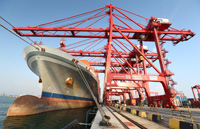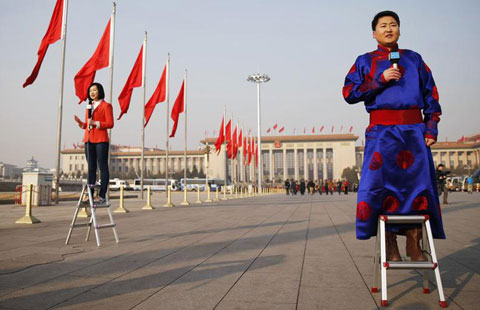Hemudu Archaeological Site
(chinadaily.com.cn) Updated: 2014-11-06 17:17It is set to transform from a “large” city into a “strong” one by building a maritime economy, according to its development plan. Technological progress related to maritime economy is anticipated to contribute 80 percent of the city’s GDP by 2020. In addition to waterways, Ningbo boasts a widespread transportation network, covering air, railway and expressway.
Only 13 kilometers away from the city center, the Ningbo Lishe International Airport is the main international terminal serving the city. There are more than 50 direct flights linking Ningbo with many important cities around the world, including Beijing, Guangzhou, Taipei, Hong Kong, Seoul, Bangkok and Singapore.
Apart from its prosperous private economy, Ningbo also has a rich cultural foundation and it offers a stimulating mix of the old and the new.
In Ningbo’s Yuyao region, the Hemudu Archaeological Site, which was unearthed in 1973, is one of the most important archeological discoveries made in China in the 20th century.
The remaining relics, including rice seeds and delicately-made wooded oars, evidence a flourishing Neolithic culture on the river delta dating back thousands of years.
The Hemudu findings, which are now included in the mainland’s school textbooks, challenged the conventional view that the Yellow River region was far more advanced than the rest of China in ancient times. It proves that the Chinese civilization originated from both the Yellow River and the Yangtze River. Another historical site is the Tianyi Pavilion, a private book house that a military official began to build for his family in 1566.
The building has stood for hundreds of years and it is recognized as the oldest preserved book pavilion in China. Around 160,000 ancient books have been collected in the pavilion, an invaluable asset that has played a key role in the cultural exchanges between China and other countries. The port city was a start of the ancient maritime Silk Road. Nearly 200 ceramic kilns preserved in the city’s Cixi area witnessed the boom in ancient international trade. Not only commodities, but also cultural currents, gathered at the burgeoning port city. As a result, Buddhism found its niche there. Built in the early Western Jin Dynasty (AD 265-316), Ashoka Temple in Ningbo is the only ancient temple named after the Indian emperor in China.
The 38,000-square-meter Tiantong Temple complex has more than 30 buildings, which is a scale rarely seen in East Asia, locals said.
Other Buddhism facilities, such as Xuedou Temple, a venue to house Maitreya Buddha, and Baoguo Temple, the oldest wood building complex on the Yangtze River Delta, reinforce Ningbo’s position in Buddhist exchanges, especially with Japan. It has established a number of partnerships with foreign cities. There are 1,530 historic sites across the city, including 31 national-level ones. And Ningbo has 261 items on the list of intangible cultural heritages, including 21 national ones.
- Deputies: Foreign extremists seek inroads in northwest
- For expats, Shanghai tops list for desirability again
- China, US should look forward with sincerity: FM
- China to protect rights of overseas citizens
- China February exports surge, imports drop
- China says DPRK leader meeting to happen when 'convenient'
- Cause of NW Chinese city odorous tap water identified
- China asks Sri Lanka to protect interests of investors over suspended port project
- Chinese maths textbook introduced into Britain
- Li wants local levels to be given more powers







